
Writing a product description is tough. You need to make people curious. Engage them to buy the product. On the other hand, writing a food product description? That’s even tougher! Because you have to tantalize people’s tastebuds. Drive them hungry. Play with their rawest emotions. Then make them go for the kill. Scary business, innit?
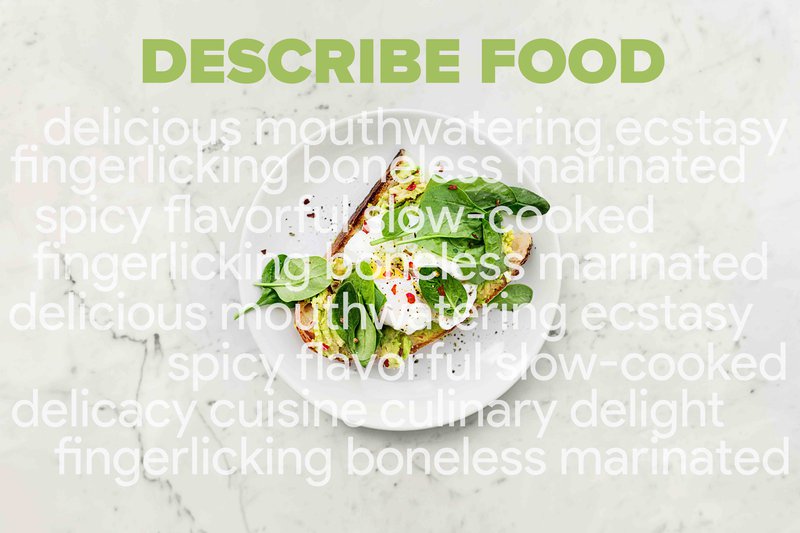
Not really! If you know the art of writing food descriptions. With challenges come opportunities. In this quick guide, I will show you-
Well, let’s cook now, shall we?
Every marketing strategy boils down to one line. Know thy audiences. If you write a food product description for everyone, you write it for no one. Because the best descriptions address the deepest desires of the core audiences.
Fixate on a target group. Then write as if you were talking directly to them. So, harness the power of the word “you”. Your words will then act as trigger points for those target segments.
Here is a prime example of knowing thy audiences by Beyond Meat. The brand caters to “conscious” people, if you will. Because they desire meat but expect a minimum impact on their bodies and the environment. So, Beyond Meat produces plant-based meat. Beyond Meat is the future of red meat, the customers believe.

Now focus on the product description. Trace the following phrases.
Every phrase inherently serves the described audiences. Hence, every word renders the product attractive to the target segment.
Features make up the product. Merely listing features is a mistake often made. Rather, translating these features into benefits can help the customers understand better. “Healthy” is the feature of a food product. Conversely, the quality of the food to “help you live better” is the benefit.
Consider this example.
Our recipe is as original as your grandma’s. Our ingredients are hand-picked from the deep forests of China. So that you get the most authentic sublime Chinese experience.
Order Now. Call XXX for Chinese at Home.
Here, “hand-picked” is the feature of the food; whereas, authenticity is the benefit. The use of the word “grandma” inspires purity. Hence, the food caters to people who seek authenticity. People who crave originality.
Start by answering these questions.
The answers will guide you to translate features into benefits, thereby crafting a solid food product description for the right audience.
As with features, pain points can be translated into benefits. In fact, a food product description that solves a pain point is an effective one. For example, we look at Ben & Jerry’s, an ice cream manufacturer.
Ice cream consumers in the UK are extremely health-conscious. They feel guilty while consuming high-fat ice cream. Hence, the brand claims to have “lower fat than similar ice cream products”. In this way, the most-feared pain point can be leveraged and transformed into an opportunity with the help of intelligent food description.

This technique is used by small or exotic food brands. The description contains detailed information to educate the buyers. Hence, customers can make smart purchase decisions. The bottom line is to make the consumers feel confident.
This is an excerpt from the menu at Dishoom. This Indian restaurant has a local and a global customer base. However, the names of Indian food are tricky. Therefore, the restaurant added detailed information about ingredients under each food item. This is a simple execution of empowering the customers.

We human beings are engineered to love stories. We love listening to stories. In fact, we breathe stories. Hence, stories are great marketing tools. Therefore, some food brands such as Peppersmith have invented stories as product descriptions.
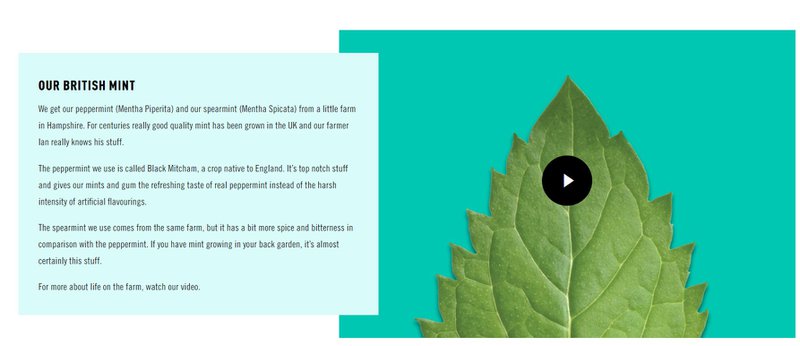
They don’t describe mint with the usual adjectives i.e. fresh, and all other generic synonyms. Because the brands do not sell peppermint. They sell stories. Stories of the original mint. Of the people who produce the mint. The brand, in one word, sells emotion through this evocative food product description.
An out-of-the-box food product description is useless without a proper call to action. Go back to the previous examples. Every effective description includes a proper call. Without so, your customers are left in suspense.
A call to action might come in many forms. The most common form is urging customers to ORDER NOW. But that isn't fun, is it? So, you need to spice up your call to action based on your brand tone and feel.
Here is an example from Impossible Foods. Instead of a generic order-now message, the brand uses a playful tone. Firstly, it addresses its customers in Spanish and excites them. Then, it addresses their desires. Finally, the brand urges its customers to order tacos on Tuesdays.
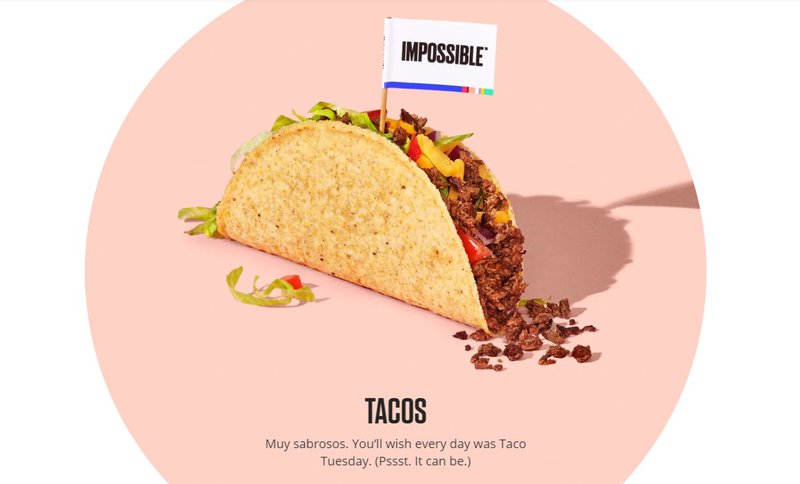
People confuse food product descriptions with leaving a string of meaningless superlative adjectives. The right set of adjectives can set the brand tone. Moreover, it makes the write-up more flavorful.

Baskin Robbins sets an example of tantalizing its customers with the rightly placed adjectives. Notice the words, “rich” and “richer”. These sensory words convey the brand’s use of pure chocolate. It also reminds customers of the creamy texture of ice cream.
The adjectives are further complemented by several verbs i.e. “loaded with” or “swirl”. These verbs have unseen effects on the human tongue. It’s like driving people hungry with words.
Here is a sample of how you can craft similar messages with spicy food as well. We take Sliced Duck Breast, an Asian food for reference.
The Duck is considered a holy grail among Thai proteins. When combined with the natural sourness of tamarind, it is guaranteed to play like an orchestra of flavors for your tastebuds.
Thinly sliced cuts of tender duck meat, marinated in a broth of the finest herbs & spices.
Drizzled with a dash of our house special tamarind sauce.
This dish will surely leave you yearning for more.
Experience the exquisite wonders of Thai cuisine at X Restaurant. Call XXX for a sublime Thai experience.
Often you find your brain facing a writer’s block. So, finding the right adjective becomes challenging. Googling synonyms also doesn’t do the trick anymore. Hence, you can try Words to Use.
On the right panel, you will find different topics. For food product description, choose Food & Beverages. Now you will have different categories to choose from i.e. meat and seafood, beverages, wine, sweet desserts, etc.
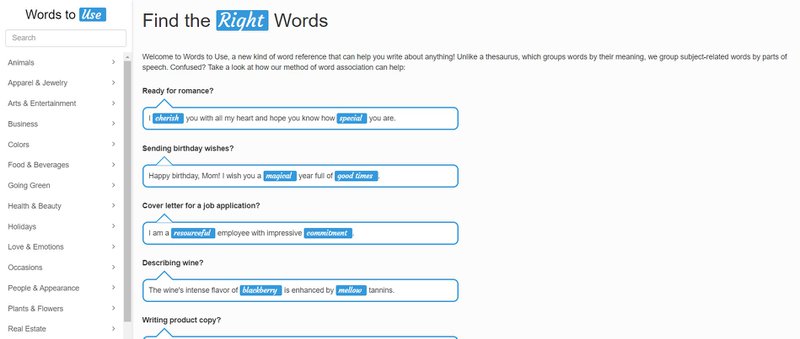
For example, we are writing a food product description for a confectionary. So, click the Sweets & Dessert section. The following window will pop up. In this way, you can find the right adjectives in no time!
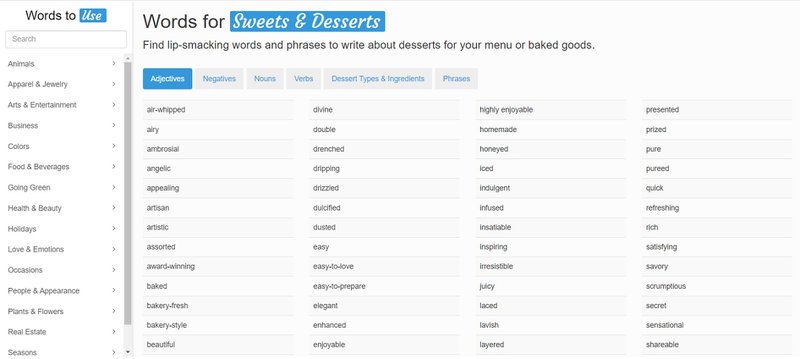
Here is how you craft an effective food product description in a nutshell. Identify your buyers. Then understand their deepest desires and pain points. Capture their attention with sensory and tantalizing words. You can further entice them with stories or empower them with information. Finally, include a proper call-to-action.
Voila! There you have it. If you need further help with writing solid product descriptions, we are always here. Contact BlogWriters, your dedicated content marketing team.
